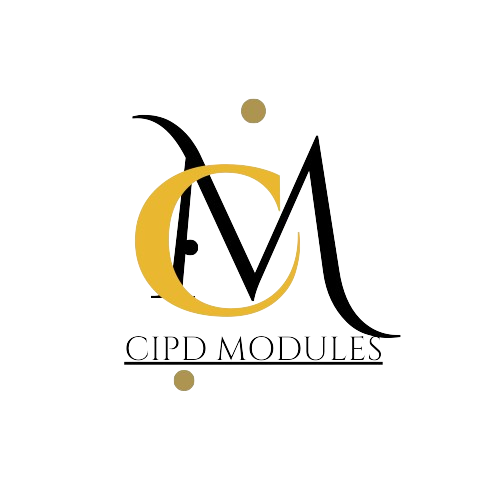
Table of Contents
Introduction
This module offers a comprehensive understanding of how an organization’s structure influences its business-related aspects. It delves into the dynamics of organizational change and performance across various dimensions. Participants will gain insight into the following key areas of organizational structure:
- Navigating the digital landscape
- Significance of business strategy and planning
- Recognizing the impact of culture
- Enhancing employee well-being
Learning objectives
Learners will develop proficiency in the following areas:
- Understanding the interplay among organizational structure, strategy, and the tangible business landscape.
- Skillfully assessing organizational challenges and priorities through a comprehensive analysis of external operational factors and modes.
- Articulating the multifaceted drivers of organizational change, encompassing theories and human behavioral dynamics.
- Skillfully evaluating methods to foster a constructive culture by harnessing diversity and inclusion.
- Expertly dissecting the correlation between an employee’s lifecycle and their professional journey, while also scrutinizing how behavioral practices align with organizational strategies to fulfill objectives and address internal requisites.
Relationship between organizational structure, strategies, and physical environment
Students will gain a comprehensive grasp of evaluating the strengths and weaknesses inherent in diverse organizational structures, along with a deep understanding of the rationale behind their support. Given the distinctiveness in products, services, and clientele among various organizational types, participants will develop an intricate comprehension of the intricate nexus encompassing a company’s strategy, revenue generation tactics, product and service portfolio, and customer base. This understanding extends to scrutinizing how external forces and business landscapes exert influence on corporate strategies, shaping perspectives, performance trajectories, strategy establishment and execution, revenue generation modalities, and both horizontal and vertical strategy integration.
Participants will thoroughly explore the mechanisms that impact external organizations and their constituents. This exploration is conducted through meticulous analysis of trusted methodologies that encompass legal regulations, the evolutionary significance of the organizational lifecycle, and market dynamics. The imperative of considering external determinants in gauging an organization’s competitive edge and navigating governmental policies is underscored. Decision-making within the organizational framework is also guided by an array of factors spanning international dimensions, international bodies, demographics, socio-technological insights, technological imperatives, and the sway of trends on organizational priorities within the external milieu.
Further insights are garnered as learners engage in the dissection of an organization’s prevailing priorities, challenges, and triggers. This comprehensive analysis encompasses aspects such as organizational architecture, diverse operational phases, and innovative products and services. Additionally, the purview extends to encompass factors like remote work paradigms, financial targets, customer-centric initiatives, structural realignment, technological advancements, labor scarcities, product innovation, and skills shortages.
The dynamics of an organization’s structures and systems are significantly shaped by its people practices. Within this chapter, we delve into the ways in which human resources professionals can exert influence on organizational structures and systems. This influence is achieved through strategic interventions, fostering robust business partnerships, orchestrating organizational frameworks, enhancing workforce capabilities, adeptly managing talent, and pinpointing pivotal organizational priorities.
This module encompasses a comprehensive evaluation of a company’s technological landscape and its ramifications on the working environment. The assessment of technological integration within an organization encompasses factors such as the quality of working equipment, the evolution of operational systems, the extent of technology deployment throughout the organizational fabric, the depth of technical support, and the allocation of financial resources towards technological advancements.
The culture of an organization and how people behave at work
Throughout the duration of the course, participants acquire a profound understanding of both individual and collective organizational behaviors. They develop the ability to scrutinize and interpret the intricacies of human and organizational interactions. For instance, they delve into the model of employee behavior within a team, a lens through which to comprehend the underlying organizational culture. Various robust theories come into play to elucidate diverse workplace cultures, encompassing paradigms like system theory, nudge theory, and high-performance organizational theory. The exploration extends to encompass leadership and management dynamics, group synergies, organizational support systems, and motivational frameworks, all contributing to a holistic comprehension of people and organizational behavior.
Learners engage in a comprehensive evaluation of the driving forces behind transformative change and the intricacies of change experiences. They familiarize themselves with diverse change management methodologies, including Lewin’s three-step theory of change, Kotter’s eight-stage model, the planned change model, catalysts for change, the environmental change paradigm, and influential change levers.
The unit places a prominent spotlight on fostering a work environment that thrives on diversity and inclusion. It explicitly delineates the core concepts of diversity and inclusion within the context of prevailing legislations. Furthermore, it delves into the repercussions of a culture that lacks diversity and inclusion. Participants emerge equipped to adeptly assess organizational cultures and theories, discern the developmental stages of organizational culture, and outline the classifications that define it. A hallmark of positive cultures lies in equitable processes and policies, communal skills and knowledge, robust employee engagement, active participation and voice, and a shared set of beliefs.
Workplace behavioral patterns are intricately woven with the repercussions of people practices on an organization’s prevailing culture and behavioral norms. The extent to which people’s practices shape their conduct becomes a subject of keen observation and assessment. For instance, individuals who champion enhanced work quality and enriched professional lives exemplify their behavior by emulating role models and adhering to established policies. This potential for influence is profoundly influenced by core beliefs and values, the foundation of trust, the dynamics of motivation linked to rewards, attitudes towards support and learning, and the intrinsic value attributed to employees by the organization.
This unit delves into the multifaceted impacts of work on employee well-being and the myriad factors that contribute to it. The examination revolves around a comprehensive evaluation of how well-being inherently intersects with employee engagement, the sense of purpose derived from work, job contentment, motivational levels, physical and mental health, resilience, and self-esteem within the work context. These dimensions are intrinsically tied to psychological equilibrium between work and personal life, encapsulating the challenges related to familial responsibilities. Motivational dynamics, such as the expectation theory, where employees strive for excellence to attain rewards, are explored, along with the nexus between employee commitment levels and resultant issues like punctuality, absenteeism, efficiency and capability, and the fabric of working relationships.
The way people practice impacts the achievement of organizational goals and objectives.
Throughout this unit, we embark on a comprehensive exploration of the intricate relationship between an employee’s lifecycle and their work-life dynamics. A thorough evaluation is conducted, spanning the diverse array of people-centric roles that unfold at each stage of this lifecycle, illustrating their progressive evolution. The employee’s journey unfolds across five distinct phases: attraction, recruitment, induction, engagement, succession, exit, and post-employment connections.
A pivotal focus lies in unraveling the interconnectedness of human resource practices with various organizational domains, underpinning broader people-related aspects and aligning with organizational strategies. This necessitates a systematic assessment of the interrelations among designated people practice domains, encompassing realms such as human resources, learning, and development, interwoven with other organizational facets. This encompasses scrutinizing the synergies between people practices and the strategic underpinnings, forging connections between people practices and organizational functions, elucidating the services dispensed by specific realms of people practice and their embedded organizational support, and elucidating the mechanisms of assimilating people practices across employees and organizational structures.
As we progress through this unit, you will delve into the contemporary themes that shape the landscape of work within specific sectors. The fusion of technology offers a potent response to the myriad challenges encountered across diverse settings and contextual landscapes. Students meticulously dissect how prevailing insights engender transformative impacts on work paradigms, both internally and within the broader external context.
An integral facet of this course entails empowering students to adeptly navigate the intricacies of consulting and actively engaging with internal clientele. A formidable methodology to achieve this involves a comprehensive analysis of how people practices effectively address internal customer needs. This entails a multifaceted approach, encompassing stakeholder analyses, consultation and communication processes, and rigorous need assessments to inform activities.
Participants emerge adept in dissecting the indispensable components of strategic planning, ensuring seamless project delivery that impeccably aligns with customer requisites. The spectrum of planning encompasses quintessential facets such as goal establishment, milestone determination, risk assessment, cost estimation, and resource aggregation. Encompassing the entire gamut of project management, from conceptualization and implementation to culmination, participants develop strategies that ensure the harmonious fulfillment of project objectives. The mantle of leadership within an organization takes center stage, as it consistently engages with stakeholders and orchestrates activities to facilitate ongoing monitoring and evaluation endeavors.
What is the significance of organizational culture in achieving high performance?
Organizational culture shapes the values, behaviors, and norms within a workplace. A positive and aligned culture can drive employee engagement, collaboration, and innovation, leading to improved organizational performance. Understanding and nurturing the right culture is essential for sustained success.
How can HR professionals influence and shape organizational culture?
HR professionals play a pivotal role in shaping organizational culture. They can influence culture through recruitment practices, training programs, communication strategies, performance management, and leadership development. By aligning these practices with desired cultural traits, HR can contribute to a positive and cohesive workplace environment
What methods can be used to measure and assess organizational performance?
Measuring organizational performance involves a mix of quantitative and qualitative methods. Key performance indicators (KPIs), balanced scorecards, employee feedback surveys, financial metrics, and benchmarking against industry standards are some of the approaches used to gauge various aspects of performance.
How does diversity and inclusion impact organizational performance and culture?
Diversity and inclusion contribute to a rich and dynamic organizational culture. Embracing diverse perspectives and fostering an inclusive environment can lead to higher creativity, improved decision-making, and enhanced employee satisfaction. These factors, in turn, positively influence overall organizational performance.
How can HR professionals address challenges in aligning culture with performance goals?
Aligning culture with performance goals can be challenging. HR professionals can address these challenges by ensuring clear communication of values and expectations, providing ongoing training to reinforce desired behaviors, recognizing and rewarding behaviors that align with the culture, and regularly assessing and adapting strategies as needed.
Must Read:

